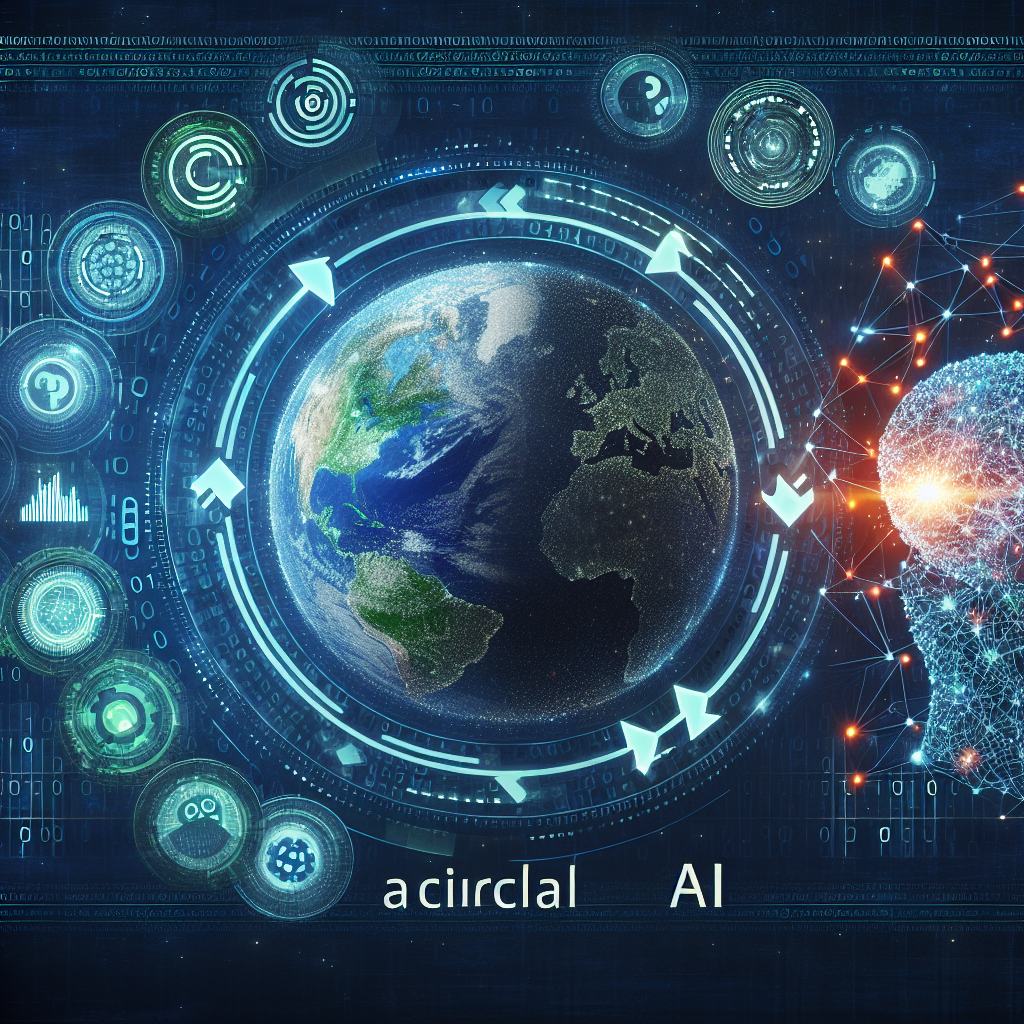Artificial Intelligence (AI) and the circular economy are two powerful forces that are reshaping the way we think about sustainability in the digital age. By combining the efficiency and intelligence of AI with the principles of the circular economy, we have the potential to create a more sustainable and prosperous future for all.
The circular economy is a concept that aims to reduce waste and maximize the value of resources by keeping them in use for as long as possible. This is in contrast to the traditional linear economy, which follows a take-make-dispose model that is not sustainable in the long run. By rethinking the way we produce, consume, and dispose of goods, the circular economy seeks to create a closed-loop system where resources are constantly reused and recycled.
AI, on the other hand, is a technology that enables machines to learn, adapt, and make decisions autonomously. By harnessing the power of AI, we can optimize processes, improve efficiency, and make better decisions based on large amounts of data. When AI is combined with the principles of the circular economy, it has the potential to revolutionize the way we manage resources, reduce waste, and create value in a sustainable manner.
One of the key ways in which AI can support the circular economy is through the optimization of resource use. By analyzing data on resource availability, demand, and usage patterns, AI algorithms can help businesses and governments make more informed decisions about resource allocation and consumption. This can lead to more efficient use of resources, reduced waste, and lower environmental impact.
AI can also help to streamline the recycling and reuse processes in the circular economy. By using AI-powered robots and machines, we can automate tasks such as sorting, disassembly, and recycling of materials, making the process faster, more efficient, and more cost-effective. This can help to increase the amount of materials that are recycled and reused, reducing the need for virgin resources and minimizing waste.
Furthermore, AI can enable new business models that support the circular economy. For example, AI-powered platforms can facilitate the sharing and reuse of products, enabling consumers to access goods and services without the need to own them outright. This can help to reduce overconsumption, promote resource sharing, and create new revenue streams for businesses.
In addition, AI can help to create a more transparent and traceable supply chain, which is crucial for the success of the circular economy. By using AI-powered tools such as blockchain technology, businesses can track the origin, journey, and end-of-life of products, enabling them to ensure that materials are sourced ethically, processed sustainably, and disposed of responsibly. This can help to build trust with consumers, investors, and regulators, and drive the adoption of circular practices across industries.
Overall, the combination of AI and the circular economy has the potential to redefine sustainability in the digital age. By leveraging the power of AI to optimize resource use, streamline recycling processes, enable new business models, and create transparent supply chains, we can create a more sustainable and prosperous future for all.
FAQs:
Q: How can AI help businesses transition to a circular economy?
A: AI can help businesses transition to a circular economy by optimizing resource use, streamlining recycling processes, enabling new business models, and creating transparent supply chains. By leveraging AI technologies, businesses can make more informed decisions about resource allocation, reduce waste, and create value in a sustainable manner.
Q: What are some examples of AI applications in the circular economy?
A: Some examples of AI applications in the circular economy include AI-powered robots for sorting and recycling materials, AI algorithms for optimizing resource use, AI-powered platforms for sharing and reusing products, and blockchain technology for creating transparent supply chains.
Q: How can AI contribute to a more sustainable future?
A: AI can contribute to a more sustainable future by helping to optimize processes, improve efficiency, and make better decisions based on data. By leveraging AI technologies, we can reduce waste, increase resource efficiency, and create value in a sustainable manner.
Q: What are some challenges to implementing AI in the circular economy?
A: Some challenges to implementing AI in the circular economy include the high cost of AI technologies, the lack of expertise in AI, concerns about data privacy and security, and the need for regulatory frameworks to govern the use of AI in sustainable practices. However, with the right strategies and partnerships, these challenges can be overcome.
In conclusion, the combination of AI and the circular economy has the potential to revolutionize the way we think about sustainability in the digital age. By harnessing the power of AI to optimize processes, streamline recycling, enable new business models, and create transparent supply chains, we can create a more sustainable and prosperous future for all. It is crucial for businesses, governments, and individuals to embrace these technologies and work together to build a more sustainable world for future generations.

